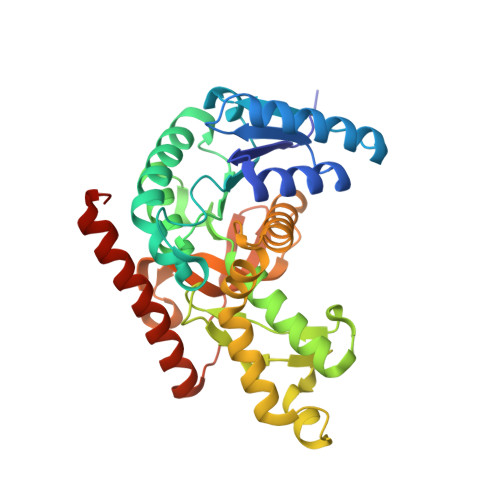An atomic-resolution view of neofunctionalization in the evolution of apicomplexan lactate dehydrogenases.
Boucher, J.I., Jacobowitz, J.R., Beckett, B.C., Classen, S., Theobald, D.L.(2014) Elife 3: e02304-e02304
- PubMed: 24966208
- DOI: https://doi.org/10.7554/eLife.02304
- Primary Citation of Related Structures:
4PLC, 4PLF, 4PLG, 4PLH, 4PLT, 4PLV, 4PLW, 4PLY, 4PLZ - PubMed Abstract:
Malate and lactate dehydrogenases (MDH and LDH) are homologous, core metabolic enzymes that share a fold and catalytic mechanism yet possess strict specificity for their substrates. In the Apicomplexa, convergent evolution of an unusual LDH from MDH produced a difference in specificity exceeding 12 orders of magnitude. The mechanisms responsible for this extraordinary functional shift are currently unknown. Using ancestral protein resurrection, we find that specificity evolved in apicomplexan LDHs by classic neofunctionalization characterized by long-range epistasis, a promiscuous intermediate, and few gain-of-function mutations of large effect. In canonical MDHs and LDHs, a single residue in the active-site loop governs substrate specificity: Arg102 in MDHs and Gln102 in LDHs. During the evolution of the apicomplexan LDH, however, specificity switched via an insertion that shifted the position and identity of this 'specificity residue' to Trp107f. Residues far from the active site also determine specificity, as shown by the crystal structures of three ancestral proteins bracketing the key duplication event. This work provides an unprecedented atomic-resolution view of evolutionary trajectories creating a nascent enzymatic function.
Organizational Affiliation:
Department of Biochemistry, Brandeis University, Waltham, United States.

















